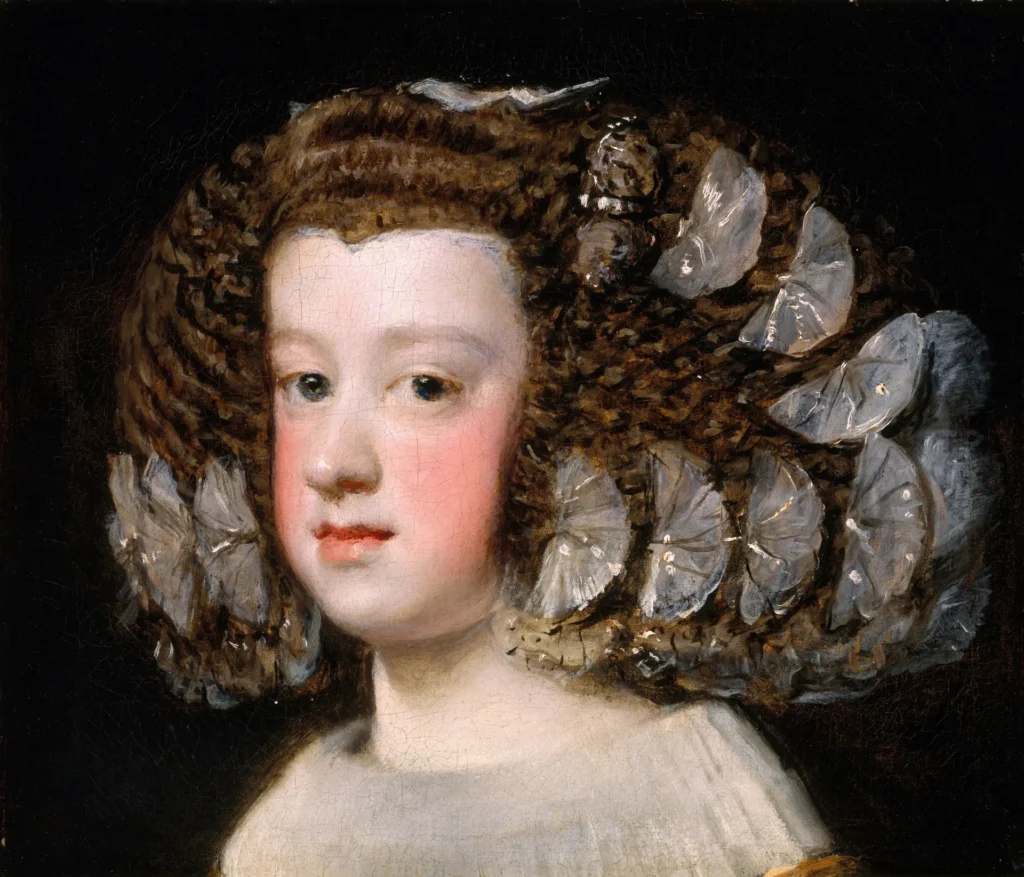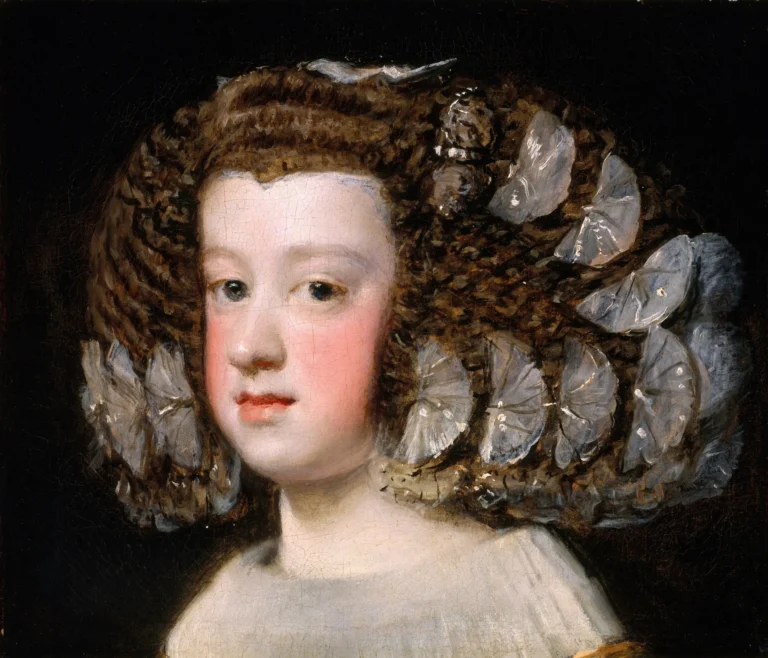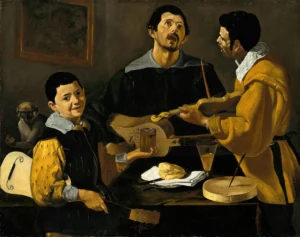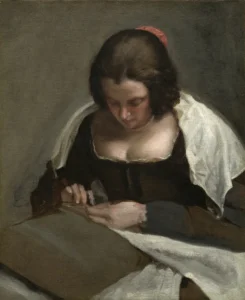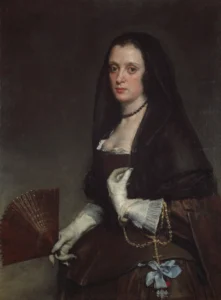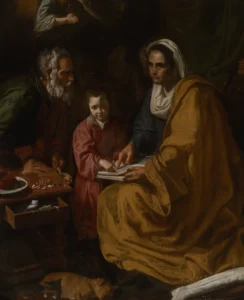María Teresa (1638–1683), Infanta of Spain (1651–54)
"María Teresa (1638–1683), Infanta of Spain" portrays the young aristocrat as a regal figure, captured in exquisite detail by Diego Velázquez. Created for the strategic purpose of arranging her marriage, these portraits emphasize not just her beauty but her status as a prospective bride. The painting envelops her in a delicate light dress, symbolizing purity and innocence, while the dark background highlights her prominent features and dignified stance. Various versions reside in renowned museums, including the Museum of Fine Arts in Boston, artfully demonstrating Velázquez's unparalleled skills in depicting royal subjects.
1651 - 1654
About the Artwork
In the early 1650s, Diego Velázquez, the leading artist at the Spanish court, embarked on a series of portraits of Infanta María Teresa as a strategic diplomatic maneuver orchestrated by her father, King Philip IV. The aim was to secure a prestigious marriage for the young princess, with the portraits sent to potential suitors such as Archduke Leopold William and Louis XIV, whom she would eventually wed. The creation of these portraits showcased not only the beauty of María Teresa but also reflected the political landscape of the time, signifying the importance of royal marriages in maintaining alliances. Velázquez’s meticulous attention to detail and ability to portray the essence of his subjects makes these works a cornerstone in the history of portraiture.
Did You Know
Liked what you see? Add it to your collection.
Enjoyed reading? Share it.
... continued
Creation and Purpose
Velázquez painted several portraits of Infanta María Teresa, the daughter of King Philip IV of Spain, in the early 1650s. These portraits were commissioned by the king to be sent to potential suitors for his daughter's hand in marriage.
Versions of the Portraits
There are at least three known versions of these portraits:
- Museum of Fine Arts, Boston: This version is believed to be the one sent to Archduke Leopold William in Brussels. It is a full-length portrait and is part of the Museum of Fine Arts collection.
- Kunsthistorisches Museum, Vienna: This version was sent to Emperor Ferdinand III in Vienna. It has been cut down at the top and bottom and is now displayed at the Kunsthistorisches Museum.
- Musée du Louvre, Paris: This version was sent to Louis XIV, whom María Teresa eventually married in 1660.
Specific Details of the Portraits
The portrait at the Kunsthistorisches Museum, Vienna, shows María Teresa in a majestic pose, wearing a light dress against a dark background. She is depicted carrying two watches and a handkerchief, which adds to the formality and seriousness of the painting. The version at the Museum of Fine Arts, Boston, is also a full-length portrait and is characterized by the freshness of its colors and brushwork, emphasizing the desirability of the fifteen-year-old princess.
Dates and Medium
The portraits were painted between 1651 and 1654, using oil on canvas as the medium.
Provenance
The portraits have had various owners throughout history. For example, the Boston version was exchanged by the Kunsthistorisches Museum with Hans von Pereira-Arnstein in 1921 and then sold to the Museum of Fine Arts, Boston, for $40,000.
These portraits are considered some of the strongest works from Velázquez's later period, showcasing his mastery in capturing the essence and dignity of his royal subjects.




